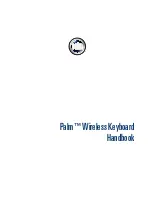
115
NOTE:
*1 By default (factory settings) the PSR-270 ordinarily functions as a 16-
channel multi-timbral tone generator, and incoming data does not affect the
panel voices or panel settings. However, the MIDI messages listed below do
affect the panel voices, auto accompaniment, and songs.
• MIDI Master Tuning
• System exclusive messages for changing the Reverb Type, Chorus Type,
and DSP Type.
The Remote Channel can be designated by using Function parameter #81.
The messages received over the set channel are handled in the same way as
key data received from the PSR-270 itself. The following messages can be
received over the designated channel set in this Function parameter; all other
messages will be ignored.
• Note ON
• Note OFF
• Control change : Bank select MSB, LSB (Main Voice Only), Modulation,
Volume, Expression, Sustain, All sound off, All note off
• Program Change (Main Voice Only)
• Pitch Bend
*2 Messages for these control change numbers cannot be transmitted from the
PSR-270 itself. However, they may be transmitted when playing the
accompaniment or using the Harmony effect.
*3 Exclusive
<GM System ON> F0H, 7EH, 7FH, 09H, 01H, F7H
• This message automatically restores all default settings for the instrument,
with the exception of MIDI Master Tuning.
<MIDI Master Volume> F0H, 7FH, 7FH, 04H, 01H, ll, mm, F7H
• This message allows the volume of all channels to be changed simulta-
neously (Universal System Exclusive).
• The values of “mm” is used for MIDI Master Tuning. (Values for “ll” are
ignored.)
<MIDI Master Tuning> F0H, 43H, 1nH, 27H, 30H, 00H, 00H, mm, ll, cc, F7H
• This message simultaneously changes the tuning value of all channels.
• The values of “mm” and “ll” are used for MIDI Master Tuning.
• The default value of “mm” and “ll” are 08H and 00H, respectively. Any
values can be used for “n” and “cc.”
<Bulk Dump>
• This is used for saving (recording) User data (User songs, User One Touch
Setting, and EZ Chord).
<Internal Clock, External Clock> (Receive Only)
F0H, 43H, 73H, 01H, 02H, F7H (Internal Clock)
F0H, 43H, 73H, 01H, 03H, F7H (External Clock)
• These messages control the clock setting for the accompaniment.
<Reverb Type> F0H, 43H, 1nH, 4CH, 02H, 01H, 00H, mmH, llH, F7H
• mm : Reverb Type MSB
• ll : Reverb Type LSB
Refer to the Effect Map (page 116) for details.
<Chorus Type> F0H, 43H, 1nH, 4CH, 02H, 01H, 20H, mmH, llH, F7H
• mm : Chorus Type MSB
• ll : Chorus Type LSB
Refer to the Effect Map (page 116) for details.
<DSP Type> F0H, 43H, 1nH, 4CH, 02H, 01H, 40H, mmH, llH, F7H
• mm : DSP Type MSB
• ll : DSP Type LSB
Refer to the Effect Map (page 116) for details.
<DRY Level> F0H, 43H, 1nH, 4CH, 08H, 0mH, 11H, llH, F7H
• ll : Dry Level
• 0m : Channel Number
*4 It is possible to switch between External and Internal Clock.
*5 When the accompaniment is started, an FAH message is transmitted. When
accompaniment is stopped, an FCH message is transmitted. When the clock
is set to External, both FAH (accompaniment start) and FCH (accompani-
ment stop) are recognized.
No MIDI messages can be received or transmitted in the Song mode.
MIDI IMPLEMENTATION CHART
113
Содержание PortaTone PSR-270
Страница 1: ......
Страница 120: ...M D G EMI Division 1999 Yamaha Corporation V332710 PO 01A0 Printed in China...






































